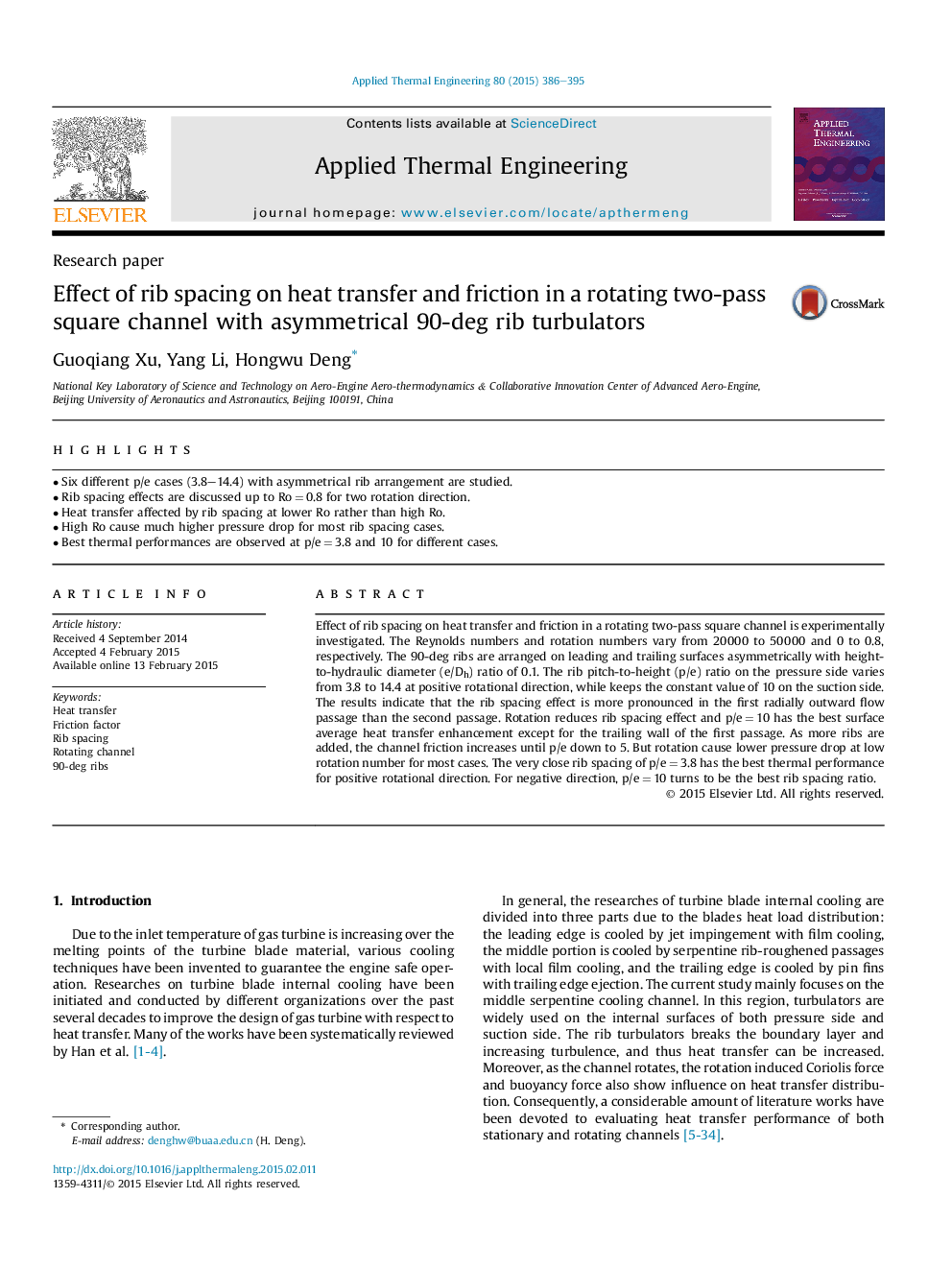| Article ID | Journal | Published Year | Pages | File Type |
|---|---|---|---|---|
| 645698 | Applied Thermal Engineering | 2015 | 10 Pages |
•Six different p/e cases (3.8–14.4) with asymmetrical rib arrangement are studied.•Rib spacing effects are discussed up to Ro = 0.8 for two rotation direction.•Heat transfer affected by rib spacing at lower Ro rather than high Ro.•High Ro cause much higher pressure drop for most rib spacing cases.•Best thermal performances are observed at p/e = 3.8 and 10 for different cases.
Effect of rib spacing on heat transfer and friction in a rotating two-pass square channel is experimentally investigated. The Reynolds numbers and rotation numbers vary from 20000 to 50000 and 0 to 0.8, respectively. The 90-deg ribs are arranged on leading and trailing surfaces asymmetrically with height-to-hydraulic diameter (e/Dh) ratio of 0.1. The rib pitch-to-height (p/e) ratio on the pressure side varies from 3.8 to 14.4 at positive rotational direction, while keeps the constant value of 10 on the suction side. The results indicate that the rib spacing effect is more pronounced in the first radially outward flow passage than the second passage. Rotation reduces rib spacing effect and p/e = 10 has the best surface average heat transfer enhancement except for the trailing wall of the first passage. As more ribs are added, the channel friction increases until p/e down to 5. But rotation cause lower pressure drop at low rotation number for most cases. The very close rib spacing of p/e = 3.8 has the best thermal performance for positive rotational direction. For negative direction, p/e = 10 turns to be the best rib spacing ratio.
